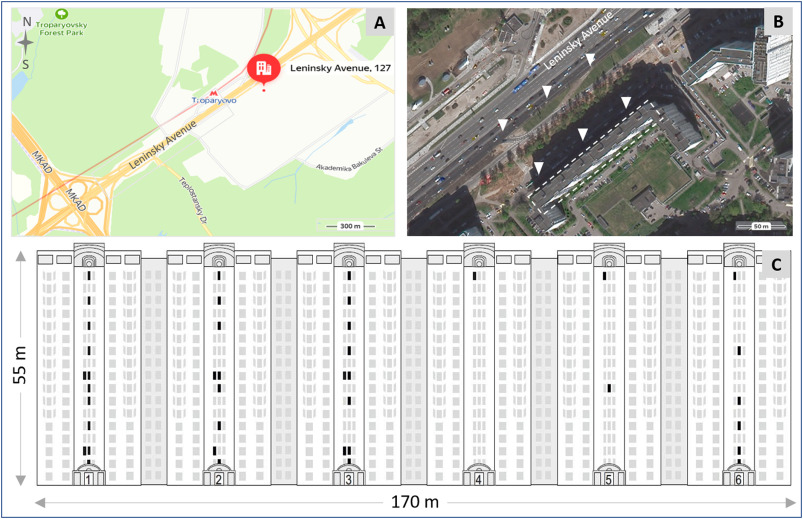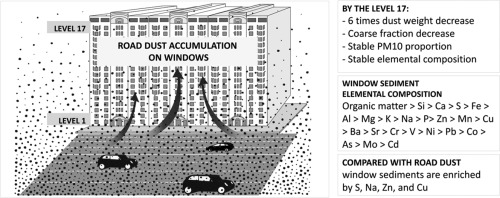
Scientists, including employees of IEE RAS, evaluated the effect of the floor height of a residential building on the amount and composition of urban dust reaching its windows. For this, the analysis included the dust accumulated over 6 months on the surface of the windows of a 17-storey building, facing a busy road. In total, 41 windows with a total area of more than 38 m² were studied.
It turned out that the amount of dust linearly decreases by 6 times from 386 mg/m² on the 3rd floor to 63 mg/m² on the 17th floor (height difference is 42 m). With increasing height, a sharp decrease in the proportion of particles larger than 0.25 mm is observed due to an increase in the amount of particles of 0.01-0.05 mm. Particles larger than 2 mm do not rise above the third floor; particles larger than 1 mm do not rise above the 9th floor. The proportion of the most physiologically dangerous fine particles (less than 0.01 mm) does not change with height.

The chemical composition of dust also does not change with altitude. According to the composition of macrocomponents (organics, Si, Ca, S, Fe, Al), window dust is similar to road dust collected near the house. However, window dust is distinguished from ground dust by a higher content of sulfur (27 times), sodium (15 times), zinc (10 times) and copper (6 times). Based on the elemental composition of dust, it can be concluded that window dust is a mixture of soil cover and rubber tires. At the same time, the share of tires is much higher than in road dust. This is most likely due to the greater sedimentation of silica compared to rubber particles.
The dust does not contain a noticeable amount of exhaust markers from automobile engines, brakes, thermal power plants, metallurgical and printing industries. Interestingly, the elimination of leaded gasoline led to the complete disappearance of excess lead from the dust. In general, the studied window dust shows a very low industrial load.
Thus, increasing the residential floor in Moscow reduces the amount of incoming dust by half for every 4-5 floors. The relative content of hazardous granulometric fractions and heavy metals does not change with height.
Nikolaeva Olga, Kuznetsova Tatiana, Karpukhin Mikhail, Vecherskii Maxim Elemental composition of sediments on exterior window surfaces along vertical gradient in Moscow // Science of the Total Environment https://doi.org/10.1016/j.scitotenv.2022.153999
